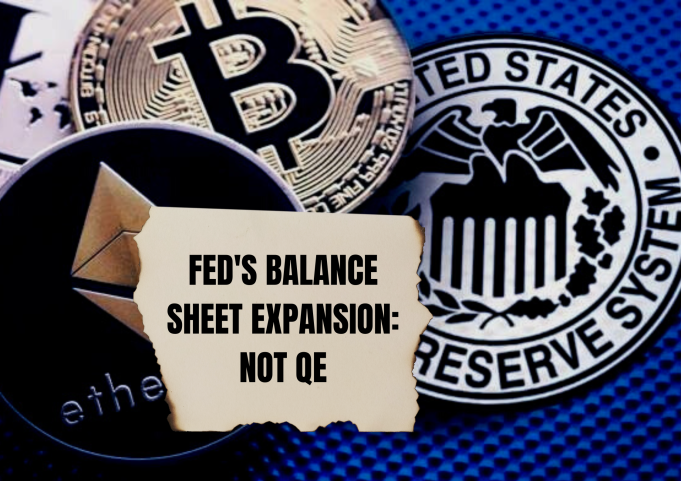The Federal Reserve has seen a sharp increase in its balance sheet, leading crypto Twitter to speculate that the world’s most powerful central bank has restarted its quantitative easing (QE) program. QE involves buying assets such as government bonds and mortgage-backed securities to inject liquidity into the financial system. After the 2008 crash and the March 2020 crash, the Fed’s balance sheet expanded by trillions, stimulating asset prices, including cryptocurrencies. This increase in the Fed’s balance sheet has crypto Twitter speculating that the QE program has been restarted, potentially leading to further asset price increases.
The recent expansion of central banks’ balance sheets is mainly due to banks borrowing short-term loans from the central banks to cope with the crisis of confidence triggered by the collapse of three U.S. banks, including Silicon Valley Bank. This expansion of the balance sheet is not a form of quantitative easing (QE), but rather a measure of financial stability. According to Marc Chandler, chief market strategist at Bannockburn Global Forex and author of the book “Making Sense of the Dollar”, QE is increasing the balance sheet for monetary purposes and is not the same as the balance sheet expansion due to banks borrowing from the central banks.
The Federal Reserve’s discount window and Bank Term Funding Program (BTFP) have provided a record amount of liquidity to banks in the form of loans. Banks borrowed $152.9 billion from the discount window and $11.9 billion from the BTFP. These loans help banks manage liquidity risks and avoid bank runs. Although the loans are not free money, banks must pay interest rates defined by the one-year overnight index swap (OIS) rate plus ten basis points. The Federal Reserve’s discount window and BTFP are providing a much-needed lifeline to banks during this difficult time.
The Federal Deposit Insurance Corporation (FDIC) lent $142.8 billion to two crisis-stricken banks, Silicon Valley Bank and Signature Bank, to create new bridge banks. This was done in response to the economic crisis caused by the COVID-19 pandemic. Meanwhile, the Federal Reserve (Fed) has been reducing its holdings of Treasuries and mortgage-backed securities as part of its quantitative tightening (QT) program, which began in June 2020. The QT program has seen the Fed’s holdings of Treasuries and mortgage-backed securities decline by $7 billion and $2 billion, respectively. The FDIC’s loan to the two banks is part of its efforts to help stabilize the economy and protect consumers during the pandemic.
The Federal Reserve’s balance sheet has increased by $297 billion, reversing months of the central bank’s efforts to reduce its balance sheet. This increase is not necessarily a stimulative measure like quantitative easing, but rather a reflection of the runs on weak banks. Andy Constan, CEO of Damped Spring Advisors, explains that this increase is temporary and not indicative of a larger trend. This increase in the balance sheet is a sign of the current economic uncertainty, and it is important to keep an eye on the Fed’s balance sheet to understand the economic landscape.
The newly launched BTFP program by the Federal Reserve has created bank reserves (liquidity) which could be stimulative if those receiving the reserves use it for investment or consumption. However, if the reserves are kept at the Fed, it does not have any effect. The record borrowing by banks signals a fear of liquidity drying up fast, which could lead to banking sector instability. This could increase the demand for Bitcoin, which is now being seen as a hedge against bank runs.













